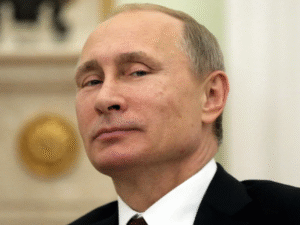$GC $DXY $SPX
#Trump #Gold #StockMarket #Trading #Markets #Investing #Economy #FederalReserve #InterestRates #Commodities #USDollar #EmergingMarkets
The financial markets saw a notable shift as the so-called “Trump trade” lost momentum, with investors reallocating capital into traditional safe-haven assets like gold. The decline in stocks associated with the Trump trade—companies that had benefited from expectations of pro-business policies—was accompanied by a corresponding rally in gold prices. The safe-haven demand for gold increased amid concerns over political uncertainty and macroeconomic risks, leading to a surge in the price of gold futures as the U.S. dollar weakened. Historically, gold has had an inverse correlation with the dollar, making the commodity more attractive to investors seeking wealth preservation during periods of uncertainty. The decline in the dollar index ($DXY) exacerbated the trend, as a weaker dollar makes gold cheaper for holders of other currencies.
Emerging markets also experienced turbulence, with stock indices across several developing economies retreating as capital flows shifted away from riskier assets. The prospect of higher interest rates in the U.S. put additional pressure on these markets, as rising yields reduce the relative attractiveness of emerging market investments. The Federal Reserve’s policies continue to be a key driver for risk sentiment, with expectations of future rate hikes weighing on emerging market currencies and equities. Investors have been closely monitoring the Fed’s statements and economic indicators, adjusting their portfolios accordingly. The MSCI Emerging Markets Index reflected these concerns, registering declines in multiple sessions as capital flight picked up pace. Additionally, geopolitical conflicts and trade uncertainties contributed to the broader risk-off sentiment, pushing money into perceived safe-haven assets like gold and U.S. Treasuries.
In contrast to equities, gold’s performance demonstrated its resilience as a hedge against inflation and policy uncertainty. Spot gold surged toward multi-month highs, with bullion-backed exchange-traded funds (ETFs) also seeing an influx of capital. While the Federal Reserve’s tightening cycle has historically weighed on non-yielding assets like gold, the metal has defied expectations by rallying amid persistent demand from central banks and institutional investors. Reports suggest that growing inflation expectations and fears over weakening global economic growth have reinforced gold’s status as a hedge against volatility. Moreover, as central banks, particularly in emerging markets, continue to diversify their reserves away from the U.S. dollar, gold’s appeal has strengthened.
As markets navigate global economic shifts, the interplay between gold, the dollar, and equities will remain a key focus for investors. Any signs of further political instability, shifts in Federal Reserve policy, or economic slowdown indicators could accelerate trends already underway. The ongoing uncertainty surrounding U.S. fiscal policies and geopolitical risks, from trade disputes to regulatory changes, will likely continue to drive volatility across financial markets. In such an environment, gold and other safe-haven assets may continue to benefit while riskier assets, including emerging market equities, grapple with capital outflows. The coming weeks will be closely watched as investors gauge the sustainability of the Trump trade reversal and the potential for further gold appreciation.







Comments are closed.